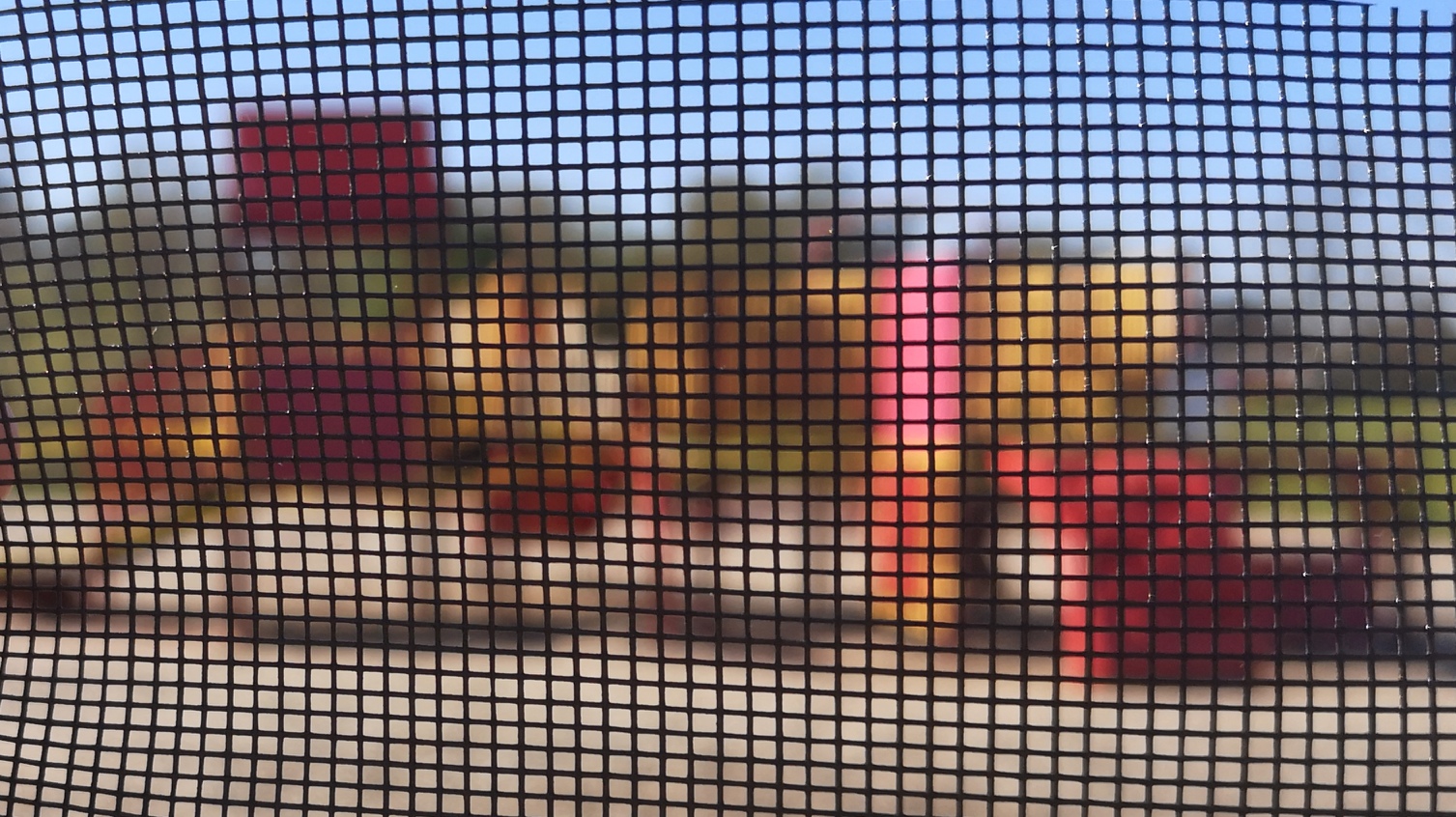Especially while in self-isolation, screens—whether windows or devices —have become a portal for connecting us with the world beyond our domestic walls. The screen that we choose determines how we perform ‘looking’ or ‘seeing’. In looking, we may strain our eye muscles on electronic screens; gazing into the distance helps us relax. In seeing, we may notice and engage with what is otherwise neglected on a daily basis.

Choose a window in your home with a framed screen and look outside. Fixate on an object in your view through the screen. Now, shift your focus onto the grid of your window screen holding that same object in your view, but out of focus. This is one way to pixelate an image.
When we look near or far, we create pixels, enabling abstraction. A series of ‘what if’ and ‘how’ questions invite us to reimagine the mundane:
- What if the past never left? What if the future is already here?
- How would we cope with what is lost while attending to what is gained?
- Could we enable ourselves to change our pasts into empowered futures?
- What if we didn’t have to wait for time to bring the future to us, but, rather, we invited it to settle in early and take over the present?
- What if this invited future holds the power to subvert our pasts?
Running the past, present and future through a single thread, embroidering the window screen allows for the literalization of ‘looking’ and the non-linearity of time-space. The needle and thread forge a new relationship between my fingers and the window/electronic screen, actualizing the space between them. There is a discourse choreographed in that back and forth, making tangible seemingly opposite notions [1].
Where are we now? Where could we be, have been, and will be? What is on the inside, on this side, in private; here and near? What is on the outside, beyond ourselves, in public, far, already passed and is yet to come?
In our pasts, there were events that took place that were joyful or painful, physically or emotionally [2]. From where we stand, looking outside, we may be reminded of those very moments—a convergent place of past and future—through our present, the window screen. There is more certainty in observing the past through the present, but this present was once an uncertain future [3]. The outdoors is a ground for play: a territory for risk from which growth thrives in uncertain times [4].
Looking outside my bedroom window, my eyes meet the neighbourhood playground across the street. I remember all of the times I was not invited to play, all of the times I performed self-censorship as opposed to self-advocacy, all of the times there was no resolution. More specifically, I remember the wind getting knocked out of me. These memories resurface as fragments, pixels in an image of my past [5].
Embroidering, I reclaimed play from the pandemic’s restrictions. As soon as playgrounds reopened, I threaded the air, my body on the swings, my breath going higher, collecting the wind that was knocked out.
Notes
- How To Spell The Fight, Natascha Sadr Haghighian, https://www.sternberg-press.com/product/how-to-spell-the-fight/
- A Spinoza Reader: The Ethics and Other Works, Spinoza, https://monoskop.org/images/9/9d/Spinoza_Benedict_de_A_Spinoza_Reader_The_Ethics_and_Other_Works_1994.pdf
- The Pandemic is a Portal, Arundhati Roy, https://www.ft.com/content/10d8f5e8-74eb-11ea-95fe-fcd274e920ca
- Lessons Taught By Portals, Annika Izora, https://www.annikaizora.com/blog/lessonstaughtbyportals
- The Wretched Of The Screen, Hito Steyerl, https://mitpress.mit.edu/books/wretched-screen

